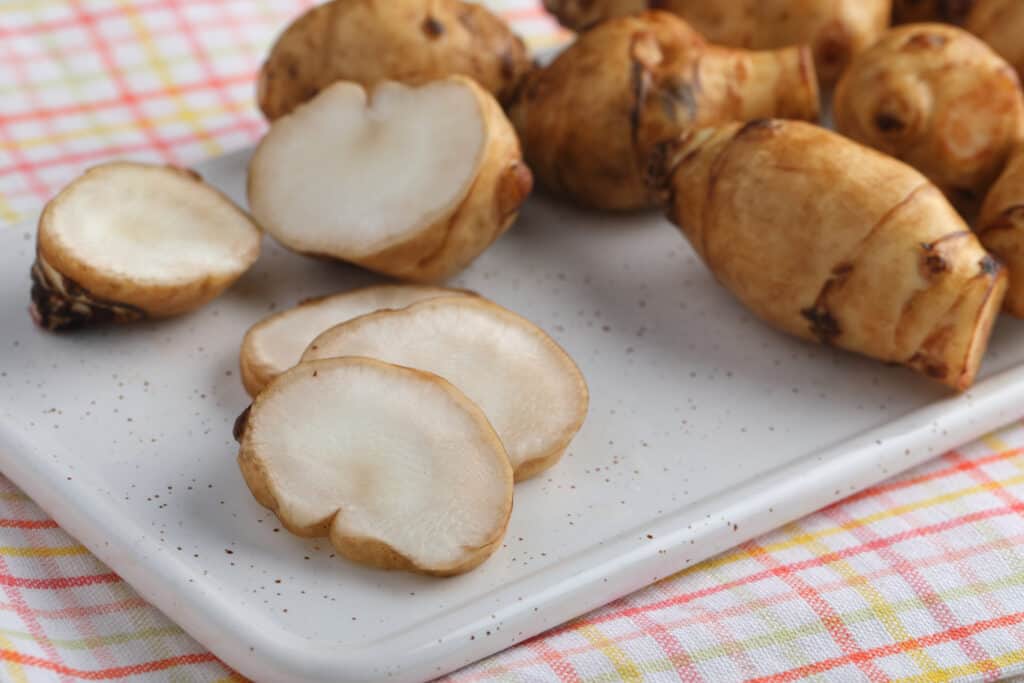The sunchoke can be eaten raw or cooked. It has a crunchy, delicate, sweet, nutty flavor. The taste is reminiscent of jicama, water chestnuts, or artichokes.
Sunchoke is the root of a perennial sunflower. The sunchoke also is called Jerusalem artichoke but it is not related to the artichoke.
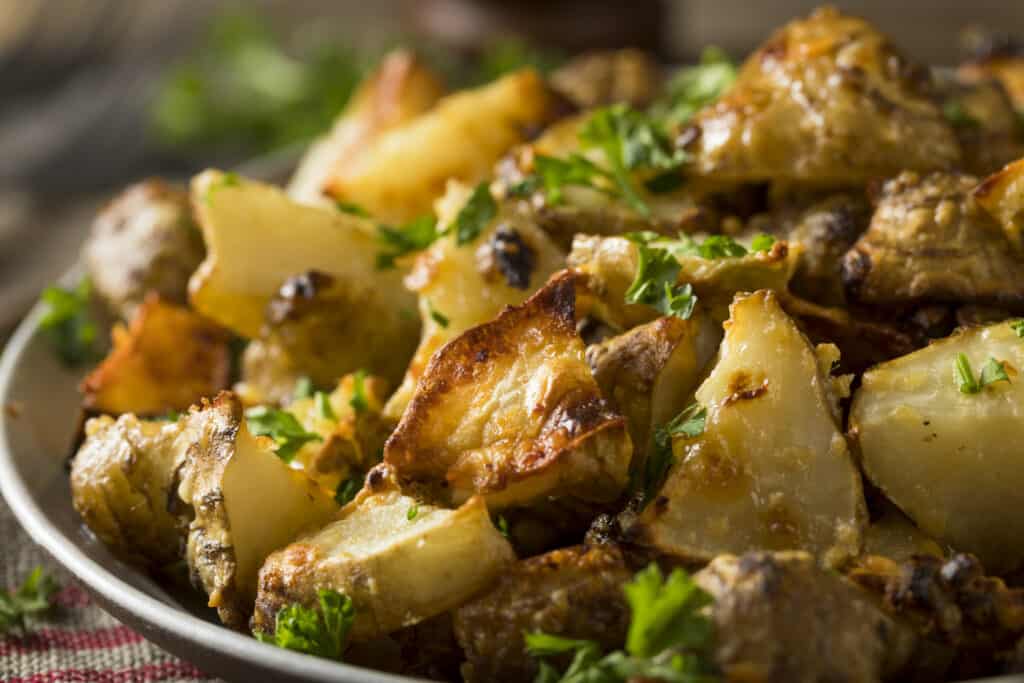
It is tastiest if harvested just after the first frost in autumn.
How to choose sunchokes
- Select sunchokes that are small and firm and fresh-looking.
- Avoid soft or wrinkled tubers or roots that are greenish in color or have begun to sprout.
Kitchen Helpers from Amazon:
- Oster Vegetable Steamer
- Chef’s Knives Set of 6
- EZ Off Jar Opener for Weak Hands
- Pepper Core Remover Stainless Steel
- Kitchen Utensils – Set of 35
How to store sunchokes
- Wrap the sunchoke in a paper towel and place it in a plastic bag in the refrigerator for up to a week or store it in a cool, dry well-ventilated area away from light.
- Withered sunchokes have lost moisture. Handle sunchokes with care because they bruise easily.
How to prep sunchokes for cooking
- Wash sunchokes before using.
- Sunchokes are difficult to peel so cook them before you try to peel them. Peel them right after cooking because the skin will harden as it cooks.
- Place sliced or chopped sunchoke in acidulated water or the flesh will turn gray when it is exposed to air.
How to boil sunchokes
- Scrub the sunchokes and place them in cold water until ready to cook.
- Bring a large pot of water to a boil; lightly salt the water.
- Add the sunchokes, the largest first then the smaller one a minute or so later.
- Cover and cook until just crisp-tender, about 2 to 10 minutes depending on size. (When you can pierce them with a sharp knife blade they are crisp-tender. They will become mushy if overcooked.)
- Remove them as they become tender; they will not all become tender at once.
- Plunge them into ice water
- Peel and slice into ½-inch thick slices.
- Toss with butter, salt, and pepper to taste, and sprinkle with parsley.
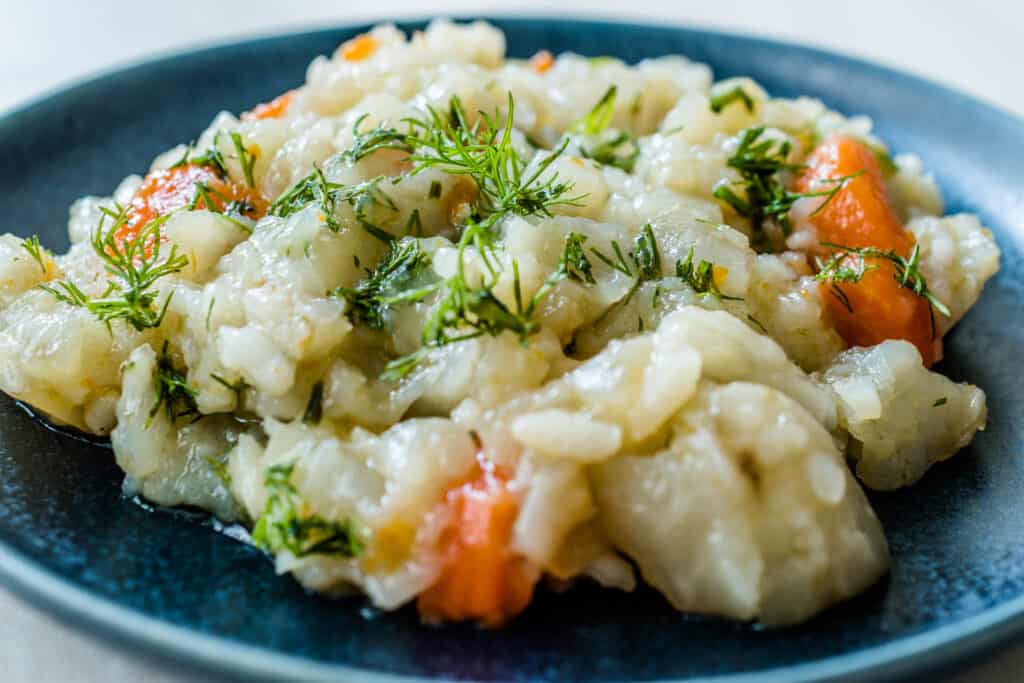
How to make sunchoke purée
- Scrub and boil sunchokes until tender.
- Peel and purée in a food processor or food mill.
- Beat in butter and cream, season with salt and pepper to taste.
- Reheat and serve.
How to sauté sunchokes
- Boil to crisp tender as directed above.
- Peel and slice into ¼-inch thick slices.
- Put 3 tablespoons of olive oil in a large, deep skillet and turn to medium heat.
- Cook occasionally stirring until the slice are browned on both sides, about 20 minutes.
- Season with salt and pepper as they cook.
- Serve hot with lemon wedges.
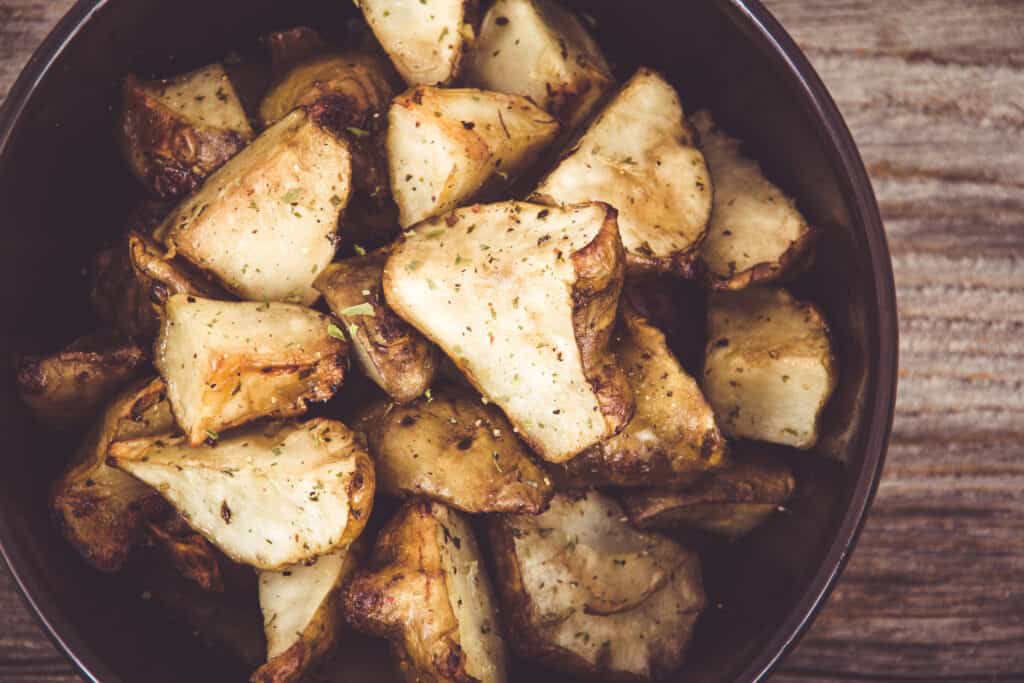
How to roast and broil sunchokes
- Boil to crisp tender as directed above
- Peel and slice into ¼ to ½ inch thick slices.
- Grease a baking dish with olive oil.
- Lay the sunchoke slice in the dish and drizzle with more olive oil; sprinkle with salt and pepper to taste.
- Sprinkle with a half cup of Parmesan cheese.
- Roast at 450 degrees F for 10 minutes then place under the broiler for 1 or 2 minutes to brown.
How to serve sunchokes
Sunchokes can be eaten raw in salads but are best cooked or marinated, puréed, or prepared au gratin.
- Shred, slice, or julienne sunchokes, then soak briefly in acidulated water, drain, and add to salads and slaws.
- Sunchokes can be cooked by boiling or steaming and served as a side dish with poultry or roasted meats, and they can be served as a substitute for water chestnuts and potatoes.
- Add sunchokes to soups, stews, crepes, and fritters.
- Sunchokes taste go well with butter, cinnamon, cloves, cream, mint, mustard, nut oils, nutmeg, onion, roasted meats, and vinaigrette.
- Peel and chunk sunchokes, simmer in water with a squeeze of lemon until just tender about 10 minutes, drain and dress with lemon juice, olive oil, and chopped parsley. Add cubed avocado and sprinkle with crumbled bacon.
- Cook sunchokes with potatoes, onions, celery, and herbs. Purée and add milk, cream, or butter to taste. This is called Palestine soup.
- Gently cook thinly slice sunchokes in butter for 5 minutes, add chicken stock to cover, simmer until tender, then add heavy cream, a little nutmeg, and a squeeze of lemon juice.
- Grate carrots and sauté them gently while you grate chokes into acidulated water. When the carrots are almost tender, squeeze sunchokes dry, add them to the carrots, and stir-fry until tender.
- Boil sunchokes with their skins in lightly salted water with a teaspoon of oil for 15 minutes, Peel and mash; add butter and chopped parsley, sorrel, or chive for seasoning.
- Mash sunchokes with potatoes.
- Add raw sunchokes to salads.
- Add thin-sliced sunchokes to a tray of raw vegetables.
- Use sunchokes as a substitute for water chestnuts in Asian dishes.
- Deep fry thin slices to make nutty chips.
- Make savory pancakes by shredding sunchokes and combining them with flour, egg, and shredded onion.
- Roast tossed with oil.
- Cook until tender then serve cooled and sliced in a salad.
- Serve peeled raw with mushrooms and a vinaigrette dressing.
- Cook and then purée sunchokes.
- Sauté sunchoke slices with tomatoes or toss them with butter and seasoning as a side dish with meat or poultry.
- Use sunchokes as an extender in meatloaf.
They may have a slight laxative effect or cause flatulence so watch your servings until you know your tolerance.
Sunchoke nutrition
- Sunchokes are a good source of iron and potassium.
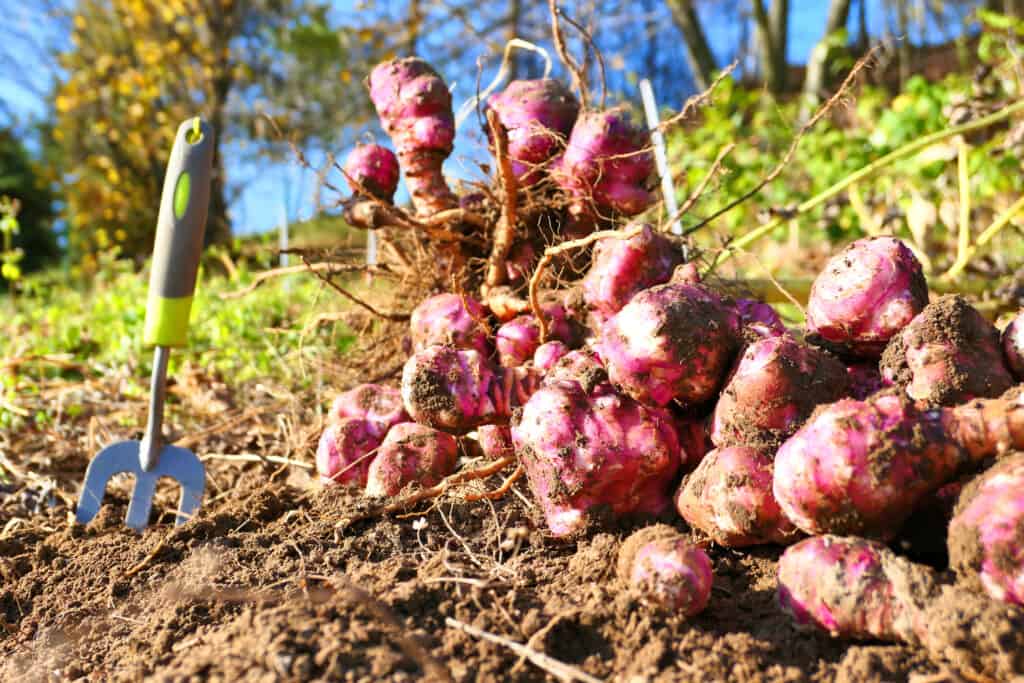
Get to know sunchokes
- The sunchoke tuber is from 3 to 4 inches (7.5-10 cm) long and 1 to 2 inches (2.5-5 cm) in diameter. It is a knobby root that resembles a ginger root. It has a thin beige skin that is edible and ivory to yellowish-white flesh that is crisp and juicy.
- The plant itself grows as high as 12 feet (3.6 m) and bears a bright yellow sunflower. The sunchoke originated in North America where it was first used as food by Native Americans living in the New England region.
- The sunchoke was introduced to Europe in the sixteenth century. The French improved the tubers and went on to cultivate sunchokes on a large scale. The French call the sunchoke topinambour which comes from the name of a South American tribe, the Topinamabas. Members of this tribe were visiting France in the sixteenth century when the sunchoke was introduced to Europe.
- The name Jerusalem artichoke is believed to have developed from the mispronunciation of the Italian name for this plant which is girasole articiocco which means sunflower artichoke. Girasole articiocco became Jerusalem artichoke.
Modern growers prefer the name sunchoke.
The botanical name for the sunchoke is Helianthus tuberosus.
Also of interest:
How to Plant and Grow Jerusalem Artichokes – Sunchokes
Jerusalem Artichoke – Sunchoke Plant Starting Tips
How to Harvest and Store Jerusalem Artichokes – Sunchokes
Five Ways to Cook and Serve Jerusalem Artichokes – Sunchokes
Articles of interest:
Best Herbs for Container Growing
Garden Planning Books at Amazon:
- Vegetable Garden Almanac & Planner
- Kitchen Garden Grower’s Guide Vegetable Encyclopedia
- Vegetable Garden Grower’s Guide
- Tomato Grower’s Answer Book
More kitchen tips:
Bring your harvest to the table. Kitchen prep tips and easy recipes for the vegetables you grow. Click below for vegetable prep and recipes you can use now.
- Almonds
- Apples
- Apricot
- Aprium
- Artichoke
- Arugula
- Asparagus
- Avocado
- Bamboo Shoots
- Banana
- Basil
- Beans, Dried
- Beans. Long
- Beans, Shell
- Beans, Snap
- Beets
- Bitter Melon
- Blackberry
- Bok Choy
- Broccoli
- Broccoli Raab
- Brussels Sprouts
- Cabbage
- Cardoon
- Carrots
- Cauliflower
- Celeriac
- Celery
- Chard
- Chayote Squash
- Cherimoya
- Cherries
- Chestnut
- Chickpea
- Chinese Cabbage
- Chives
- Cilantro
- Citron
- Clementine
- Collards
- Coriander
- Corn, Sweet
- Corn, Baby
- Corn Salad, Mache
- Cranberry
- Cress
- Cucumber
- Daikon
- Dandelion
- Dill
- Eggplant
- Endive, Belgian
- Endive and Escarole
- Fava Beans
- Fig
- Florence Fennel
- Garlic
- Ginger
- Grapefruit
- Grapes
- Guava
- Horseradish
- Jerusalem Artichoke
- Jicama
- Jujube
- Kale
- Kiwifruit
- Kohlrabi
- Kumquat
- Leeks
- Lemongrass
- Lemons
- Lettuce
- Lime
- Mache (Corn Salad)
- Mandarin Orange
- Mango
- Maple Syrup
- Marjoram
- Melons
- Michihili
- Mint
- Mizuna
- Mushrooms
- Mushrooms, Cremini
- Mustard Greens
- Napa Cabbage
- Nectarine
- Okra
- Olives
- Olive oil
- Onions
- Oranges
- Oregano
- Parsley
- Parsley Root
- Parsnips
- Passion Fruit
- Pawpaw
- Peaches
- Pears
- Peas, Garden Snap
- Peas, Snow
- Pei Tsai
- Peppers, Chili
- Peppers, Sweet
- Persimmon
- Pineapple
- Pineapple Guava
- Plantain
- Plums
- Pluots
- Pomegranate
- Potatoes
- Prickly Pear
- Pumpkin
- Quince
- Radicchio
- Radishes
- Raspberries
- Rosemary
- Rhubarb
- Rutabaga
- Sage
- Salsify
- Sauerkraut
- Savory
- Shallots
- Sorrel
- Spinach
- Squash, Summer
- Squash, Winter
- Strawberries
- Sunchokes
- Sunflower
- Sweet Potato
- Swiss Chard
- Tangerine
- Taro
- Tarragon
- Thyme
- Tomatillo
- Tomato
- Turnip
- Turnip Greens
- Yams


